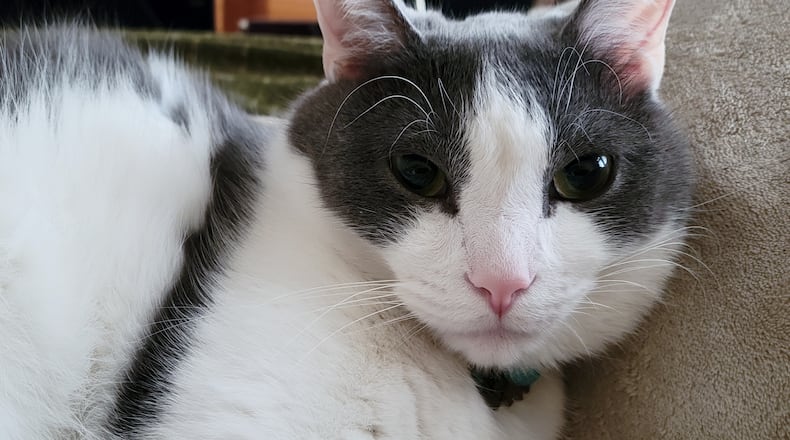If only my husband Ed’s whiskers offered such insight.
Ed’s mustache/beard combo is a mix of black and gray whiskers. They indicate little other than he likes the “look” he first cultivated as a high school senior and, like many men, hates to shave.
Pip’s whiskers are fascinating, by comparison. That’s because they are connected to his nervous system and play a critical role in how he sees and makes sense of the world.
The whiskers help him avoid running into furniture and other objects, particularly in less-illuminated areas of our house, like the basement.
Cats use their whiskers to judge distance and the size of objects in their path – along with important things such as whether they’ll fit into that UPS box or bag that turns up on the porch.
I am constantly amazed at how Pip’s whiskers aid him in navigating throughout our house. Yell “Dinner time!” and he quickly darts around chairs, ottomans and the like to reach his bowl with ease.
As a kitten, this mobility was a little unnerving, but we’ve never seen him bump into or even graze a single piece of furniture during one of his mad dashes.
This is largely due to his whiskers, believe it or not.
Cat experts say Pip has around 24 white whiskers, 12 on each side of his muzzle. To verify, I took several photos with my Olympus 35 mm macro lens. And, yes, Pip indeed does boast that many whiskers, as well as a few over each eye.
Ed, meanwhile, has way too many whiskers to count, and they tend to be thicker and more wiry than what’s on his head.
Aside from Ed being able to shave his, the big difference between my husband’s whiskers and the cat’s is that Ed could function just fine without his. He knows where the furniture is no matter what’s on his face.
As Jodi Helmer at greatpetcare.com points out, there’s a basic biological reason for a cat’s whisker dependance. She says the follicles at the base of cat whiskers are filled with nerve endings and blood vessels that contain sensory neurons that transmit information to Pip’s brain.
It’s known that whiskers also help felines hunt. Pip’s whiskers allow him to sense his prey or even to alert him to predators.
We see this in the backyard. When he and Ed are walking around near the bird feeders, Pip will suddenly crouch down in his “pounce” stance. Several times Ed has had to pull him away as a field mouse popped out of the mulch.
Now, if only I could pick up on Ed’s moods and intentions from his whiskers like I can with Pip’s.
Karin Spicer is a member of The Dog Writers Association of America. She lives with her family and two furry pets who inspire her. She can be reached at spicerkarin@gmail.com.
WHISKER FACT
Regardless of what shape a cat’s whiskers are, never trim or cut them. Cutting a cat’s whiskers will confuse and disorient the feline. Whiskers fall out and grow back just as human eyelashes do.
About the Author
